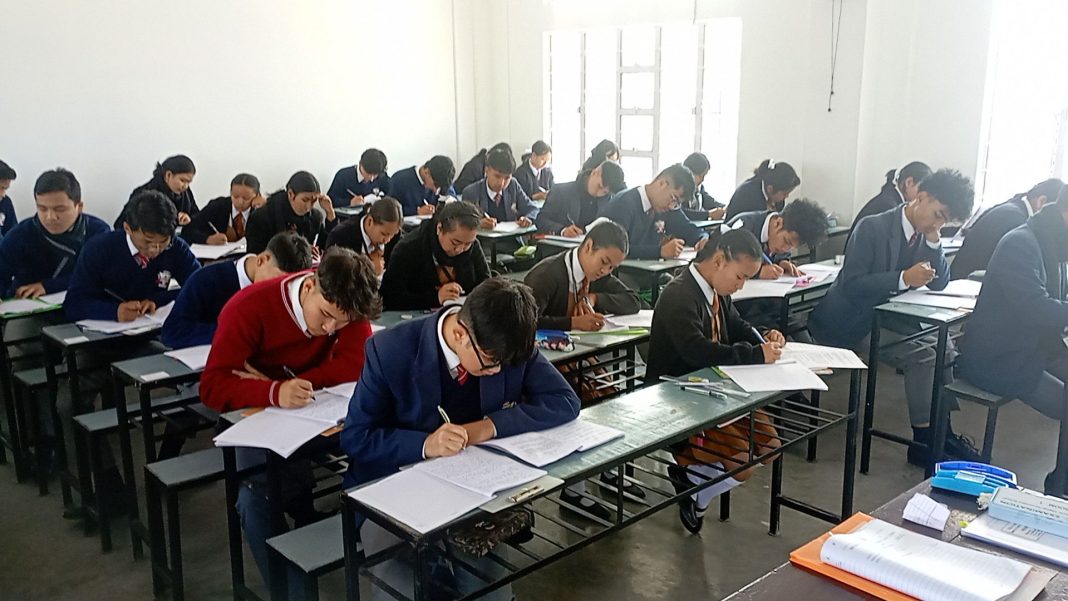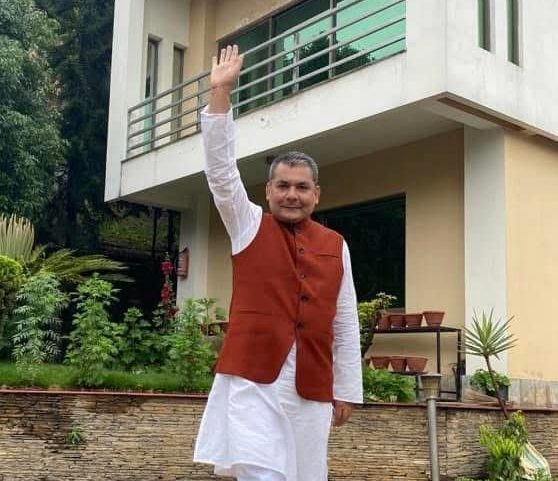By Bijoy A. Sangma
In a progressive move to preserve and promote its rich cultural tapestry, Meghalaya’s Education Department has proposed making Khasi and Garo languages compulsory subjects up to Class 4. This initiative aims to strengthen multilingual education and foster deeper cultural understanding among the state’s youth. By integrating these indigenous languages into the foundational years of schooling, Meghalaya seeks to instil a sense of pride and identity, ensuring that its linguistic heritage thrives in future generations.
Historical Context and Legislative Endeavours
The journey toward recognizing and institutionalizing Khasi and Garo languages has been both extensive and multifaceted. In September 2018, the Meghalaya Legislative Assembly unanimously passed a resolution urging the Central Government to include these languages in the Eighth Schedule of the Indian Constitution, which would grant them official recognition and support. Chief Minister Conrad K. Sangma emphasized the collective aspiration of the state’s populace in this endeavour, highlighting the deep-rooted desire for such acknowledgment.
Despite these efforts, the path to inclusion has been met with challenges.
As of February 2024, Chief Minister Sangma revealed that he had written eight letters to the Central Government between 2019 and 2023, advocating for the inclusion of Khasi and Garo in the Eighth Schedule. The lack of response underscores the complexities involved in achieving constitutional recognition for regional languages.
Political Advocacy and Cross-Party Support
The movement to integrate Khasi and Garo into the educational framework has garnered support across the political spectrum. In 2020, the Bharatiya Janata Party’s (BJP) Meghalaya unit advocated for making Khasi or Garo compulsory for students up to Class 5, aligning with the objectives of the National Education Policy. The then state BJP president Ernest Mawrie articulated the party’s intent to engage with the Chief Minister and Education Minister to advance this cause.
Simultaneously, the then Congress MP Vincent H. Pala appealed to the Union Education Minister for the inclusion of Khasi and Garo languages in the Central Board of Secondary Education’s (CBSE) list of approved languages. Pala highlighted that Mizo and Tangkhul languages, spoken by approximately 1.2 million and 1,83,000 people respectively, had already been incorporated into the CBSE curriculum. In contrast, Khasi and Garo boast speakers numbering 1.4 million and over 1 million respectively, underscoring the substantial demographic foundation for their inclusion.
Community Initiatives and Grassroots Movements
Civil society organizations have played a pivotal role in championing the cause of indigenous languages. In November 2024, the A’chik Conscious Holistically Integrated Krima (ACHIK) urged the state government to create posts for Garo teachers and lecturers in educational institutions within the Shillong region. They emphasized that despite a significant number of Garo students pursuing their academic goals in Shillong, there was a glaring lack of academic resources and faculty members proficient in the Garo language. This situation, they argued, undermines the status of Garo as one of the official languages of Meghalaya and limits opportunities for students to learn and appreciate their linguistic and cultural heritage.
Similarly, the Khasi Students Union (KSU) proposed full reservation for Khasi, Jaintia, and Garo teachers in primary schools within their respective regions. They argued that such measures would address language barriers and enhance educational outcomes, ensuring that quality education is imparted to students in their mother tongue.
Policy Developments and Institutional Recognition
The state’s commitment to linguistic integration is evident in various policy decisions. In August 2022, the Meghalaya cabinet approved an amendment making Khasi and Garo languages compulsory in judicial services examinations. The then Law Minister James P. K. Sangma made a statement that the candidates were required to secure pass marks in either Khasi or Garo, reflecting the state’s dedication to embedding indigenous languages within its institutional frameworks.
Further, in July 2024, the Ministry of Communication, Department of Posts, Government of India, approved Khasi and Garo languages as options for examinations conducted by the department. This decision followed a proposal by Chief Minister Conrad K. Sangma and marked a significant milestone in ensuring local languages are recognized in national recruitment processes.
Challenges and Considerations in Implementation
While the recent proposal to make Khasi and Garo compulsory up to Class 4 is commendable, its implementation is not without challenges. Chief among these is the availability of qualified teachers proficient in these languages. The demand for the creation of posts for Garo teachers in Shillong’s schools and colleges highlights the existing gap in educational resources. Addressing this requires strategic planning, including the training and recruitment of educators fluent in Khasi and Garo.
Moreover, the integration of these languages into the curriculum necessitates the development of appropriate teaching materials and resources. This involves not only translating existing content but also creating new, culturally relevant materials that resonate with young learners. The state’s initiative to support research, development, and promotion of local languages by providing financial assistance to scholars, writers, and authors is a step in the right direction.
Comparative Perspectives and National Trends
The movement to integrate indigenous languages into formal education aligns with national trends. Languages such as Mizo and Tangkhul have been incorporated into the CBSE curriculum, setting precedents for Khasi and Garo. Former Congress MP Vincent H. Pala highlighted that Mizo is spoken by approximately 1.2 million people, and Tangkhul by about 183,000, whereas Khasi and Garo boast speakers numbering 1.4 million and over 1 million respectively. This comparison underscores the substantial demographic foundation for their inclusion.
Cultural Preservation and Identity
The inclusion of Khasi and Garo languages in early education transcends academic instruction; it is a profound act of cultural preservation. Language is a cornerstone of identity, and its integration into the educational system serves as a bulwark against cultural erosion. By embedding these languages in the formative years of schooling, Meghalaya not only honours its heritage but also instils a sense of pride and belonging among its youth.
Soliciting Stakeholder Feedback
The Education Department’s call for feedback from stakeholders is a commendable approach to inclusive policymaking. Engaging educators, parents, and community leaders ensures that the policy is reflective of the collective will and is pragmatically grounded. Such participatory processes are vital for the successful implementation and sustainability of educational reforms.
A Vision for the Future
Meghalaya’s initiative to make Khasi and Garo compulsory subjects up to Class 4 is a significant step toward embracing multilingual education and preserving cultural diversity. While challenges persist, particularly in terms of logistical implementation and official recognition, the concerted efforts of the government, political entities, and civil society organizations reflect a unified commitment to this cause. By fostering an educational environment that values indigenous languages, Meghalaya not only enriches its academic landscape but also fortifies the cultural fabric that defines its unique identity.
The road ahead requires continued advocacy, resource allocation, and collaborative efforts. However, with sustained commitment, Meghalaya can set a precedent for other states, showcasing how linguistic heritage can be seamlessly integrated into modern education systems.
In doing so, it paves the way for a future where cultural preservation and academic excellence go hand in hand, nurturing generations that are both knowledgeable and deeply rooted in their heritage.
(The Author is a development professional, and analyst and commentator on public-affairs, policies, governance, social justice & religious freedom, with extensive experience in leadership roles globally contributing to thought leadership in public policy and social transformation.)




